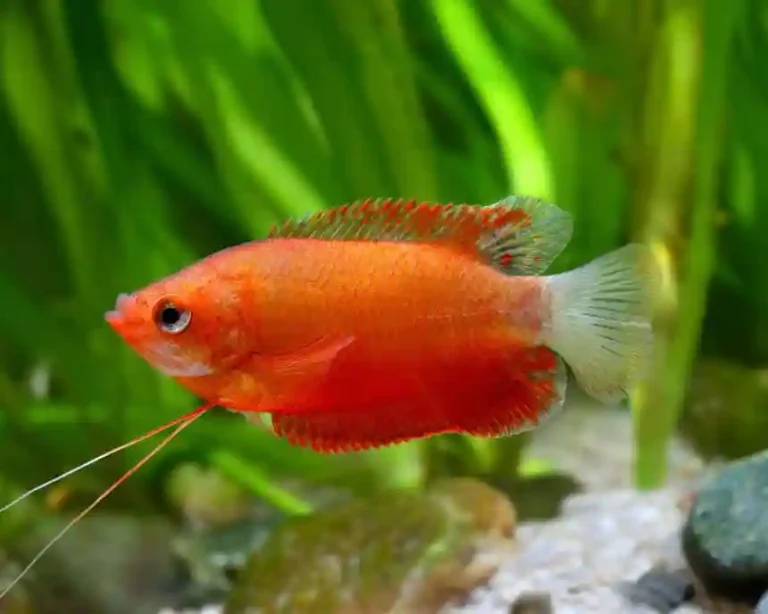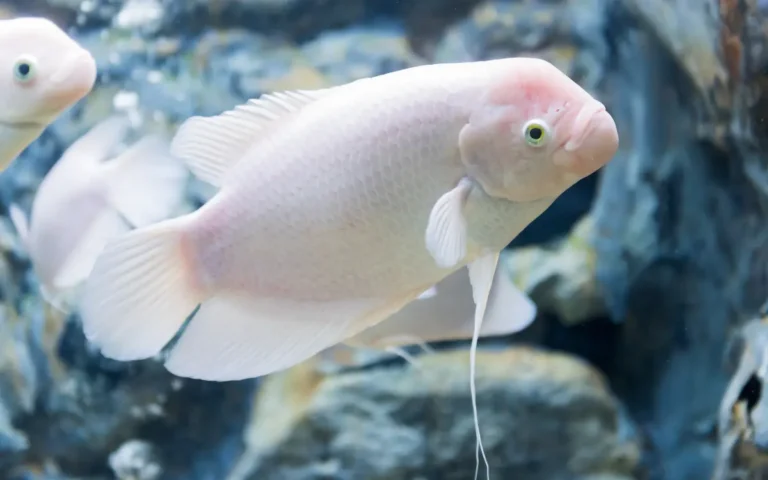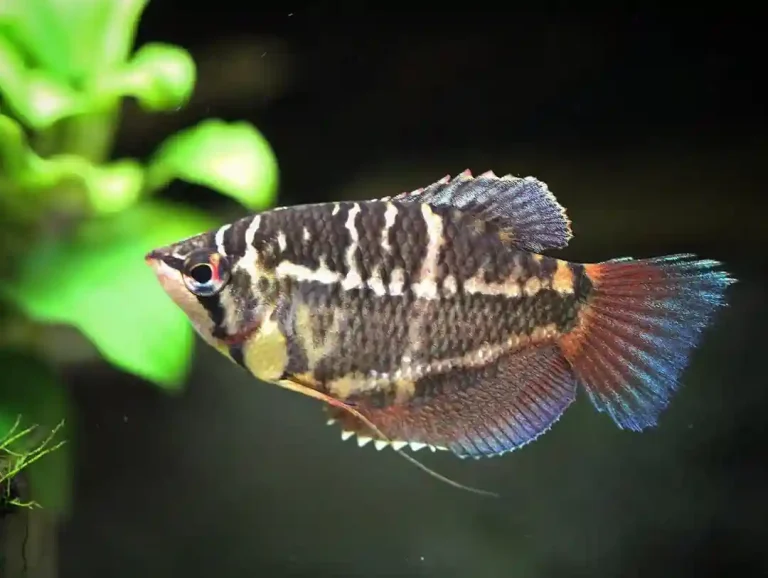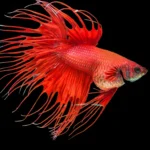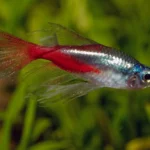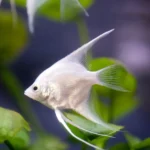Swordtails (Xiphophorus hellerii) are colorful, active freshwater fish known for their striking tails, friendly nature, and beginner-friendly care needs. These livebearers are easy to keep, breed readily, and add lively movement to community tanks. In this guide, you’ll learn how to care for Swordtail fish, from setting up their tank to choosing the right food, tank mates, and breeding tips.
Swordtail Fish Care Chart
| Aspect | Recommended Range / Setup |
| Tank Size | 20 gallons minimum (longer tank preferred) |
| Water Temperature | 72–82°F (ideal: 75–78°F) |
| pH Level | 7.0–8.3 |
| Water Hardness | 12–30 dGH |
| Substrate | Gravel or sand |
| Plants | Java fern, Vallisneria, Hornwort (with open swimming space) |
| Filtration | Sponge or hang-on-back filter with moderate flow |
| Lighting | Moderate lighting to enhance color |
| Feeding Frequency | 1–2 times daily + vegetables 2–3 times weekly |
| Tank Mates | Platy fish, guppies, mollies, corydoras, rasboras, snails |
| Water Changes | 20–30% weekly |
Ideal Tank Setup for Swordtails

Tank Size
Swordtails are active swimmers. A 20-gallon tank is the minimum, but bigger is better, especially if keeping multiple males. Choose a long tank over a tall one to give them space to swim.
Substrate & Plants
Use gravel or sand substrate. Add live plants like Java fern, Vallisneria, or Hornwort to provide shelter and reduce stress. Keep open swimming space at the front.
Filtration & Lighting
- Use a sponge filter or hang-on-back filter with gentle to moderate flow.
- Moderate lighting helps showcase their colors.
- Always use a lid or cover—Swordtails are known jumpers!
Water Parameters & Maintenance
Swordtails are hardy, but clean, stable water helps them thrive:
- Temperature: 75–78°F (use a heater if needed)
- pH: 7.0–8.3
- Hardness: 12–30 dGH
- Water change: 20–30% weekly
Regular maintenance prevents ammonia spikes and keeps fish healthy.
Swordtail Fish Diet
Swordtails are omnivores. A varied diet supports their color and health.
What to Feed
- Staple: High-quality flakes or micro pellets
- Veggies: Blanched zucchini, cucumber, spinach
- Protein treats: Daphnia, brine shrimp, bloodworms (frozen or live)
Feeding Schedule
Feed 1–2 times daily. Only provide what they’ll finish in 1–2 minutes. Supplement veggies 2–3 times a week.
Swordtail Behavior & Tank Mates
Swordtails are peaceful but males can be territorial in small spaces.
Tips for Harmony
- Keep 1 male for every 2–3 females
- Avoid too many males without lots of space
- They’re happiest in small groups and swim in the middle or top levels
Best Tank Mates Swordtail
- Platy fish
- Guppies
- Mollies
- Corydoras catfish
- Harlequin rasboras
- Nerite or mystery snails
Tank Mates to Avoid
- Bettas
- Tiger barbs
- Small-tank angelfish
- Known fin-nippers
Breeding Swordtails
Swordtails are prolific livebearers.
Breeding Basics
- Gestation: ~28–30 days
- Females can store sperm and produce several batches of fry
- Males constantly court females
Protecting Fry
- Add dense plants or use breeding boxes
- Move fry to a separate grow-out tank
- Feed them crushed flakes or baby brine shrimp
Plan ahead, as swordtail fry numbers can grow fast!
Common Health Issues & Prevention
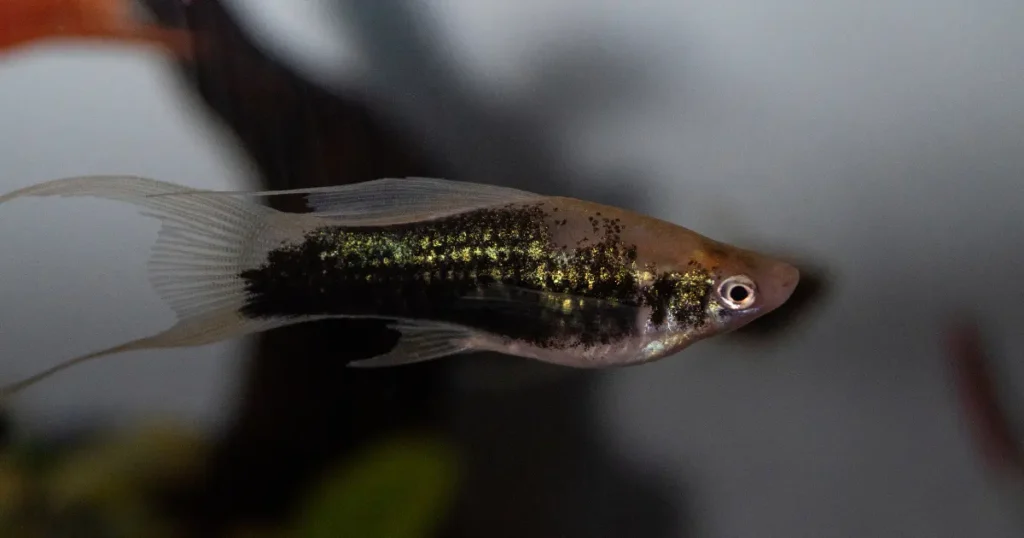
Swordtails are tough, but common issues include:
- Ich (white spots)
- Fin rot
- Ammonia poisoning
- Stress from overcrowding or overbreeding
How to prevent problems:
- Do regular water changes
- Avoid overcrowding
- Balance the male-to-female ratio
- Feed a varied, clean diet
Read also: 21 Types of Guppies
Frequently Asked Questions
Do Swordtails need a heater?
Yes. They thrive at 72–82°F.
Are Swordtails beginner-friendly?
Absolutely. They’re hardy and easy to breed.
Can Swordtails live alone?
Yes, but they prefer small groups.
Will Swordtails eat their fry?
Yes. Use plants or a breeder box to protect babies.
How many Swordtails can live in a 20-gallon tank?
3–5 Swordtails is ideal, keeping more females than males.

